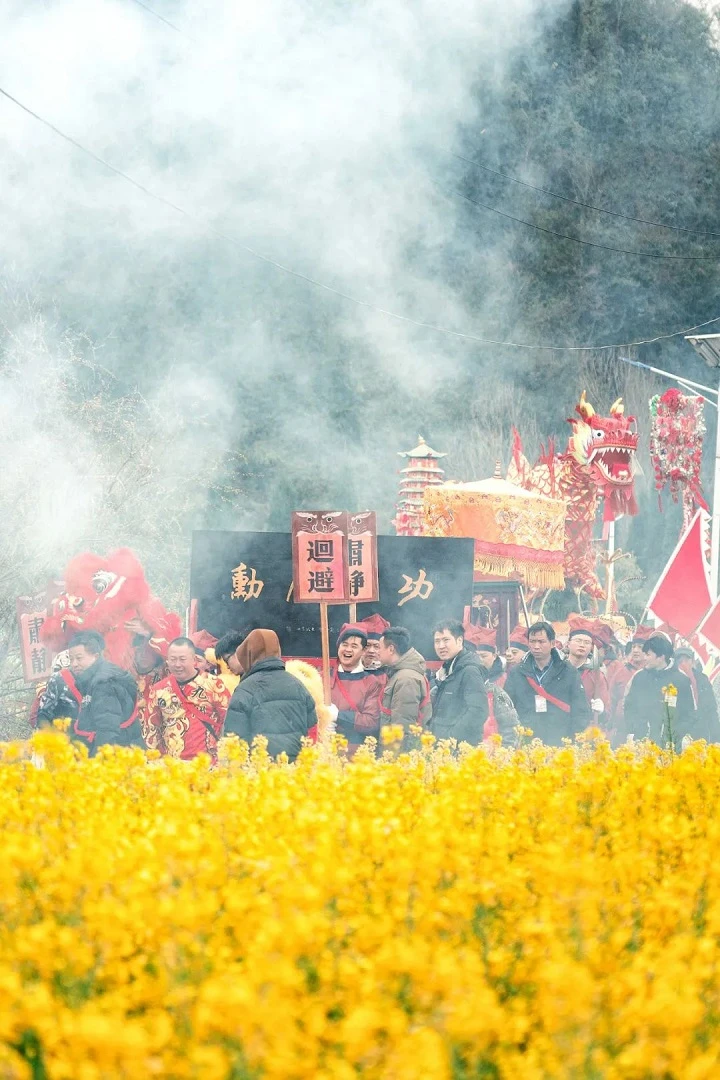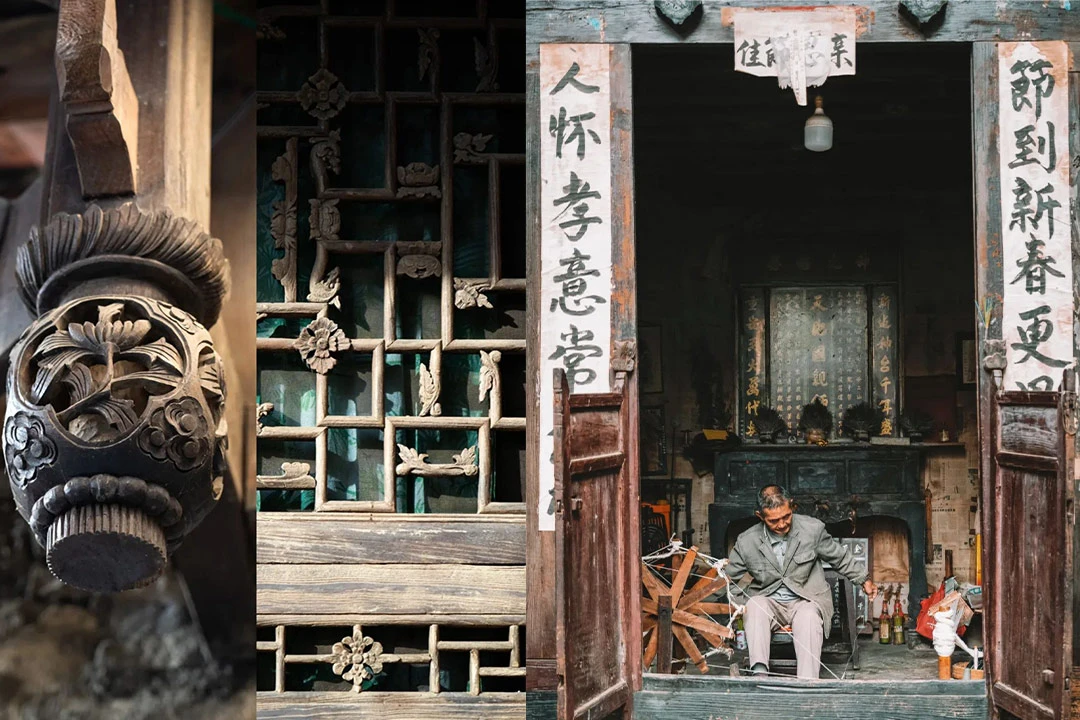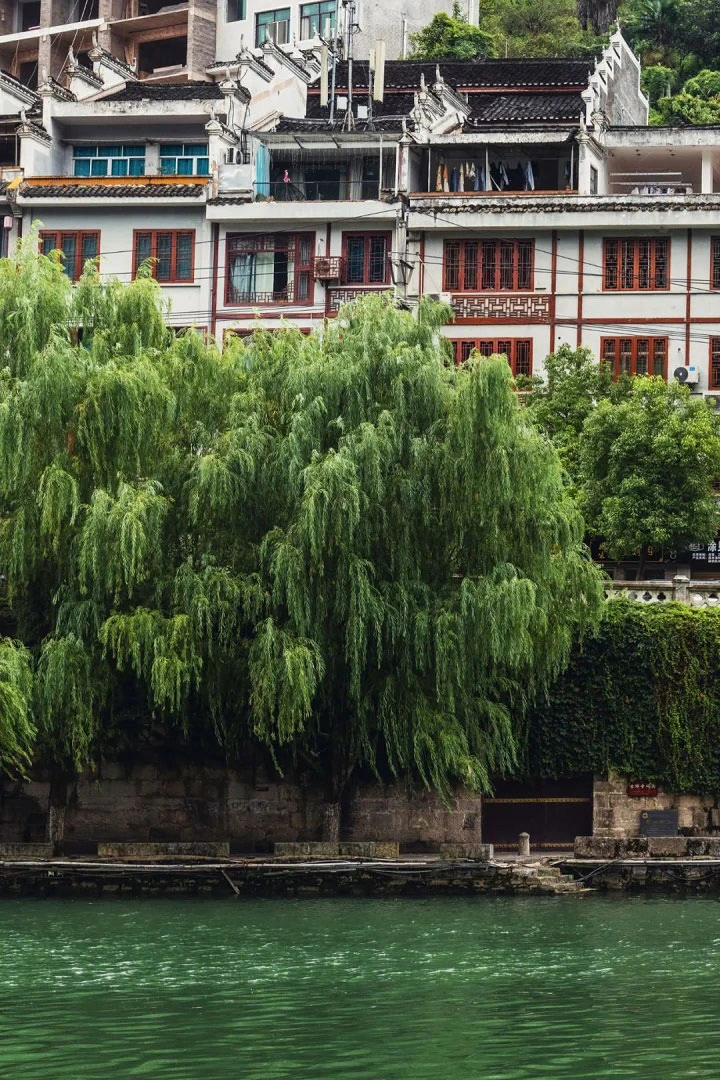The Historical Roots of Baojiatun (鲍家屯)
Nestled in the heart of Guizhou, Baojiatun is a village with a name that signifies peace and prosperity. The story of Baojiatun begins in the Ming Dynasty when Emperor Zhu Yuanzhang implemented policies to develop the southwestern region of China. Among the soldiers who journeyed with Zhu Yuanzhang's army was Bao Fubao, a soldier from Huizhou, who settled in what is now Baojiatun. For over six centuries, Bao's descendants have preserved their Huizhou heritage while becoming an integral part of Guizhou's history.
Over time, Baojiatun has evolved, blending the rich traditions of Huizhou with the unique landscape of Guizhou. The memories of Huizhou are deeply embedded in the village's culture, evident in the local architecture, agricultural practices, and water management systems that date back hundreds of years.

The Ingenious Water Management System
One of the most remarkable features of Baojiatun is its water management system, a testament to the ingenuity of its early settlers. Drawing from the water management techniques of their Huizhou homeland, the Bao family constructed a system of dams, canals, and irrigation channels that have sustained the village's agriculture for centuries. This system includes the "Dividing Fish Mouth," a structure that splits the river into two streams, irrigating the surrounding fields and forming a miniature version of the famous Dujiangyan Irrigation System.
The village's strategic location along major transportation routes, including the Gui-Huang Highway and the Guizhou-Kunming Railway, has facilitated its development and connectivity. With the opening of the Anshun West High-Speed Rail Station, Baojiatun is now just a two-hour journey from Guiyang, making it easily accessible for visitors.
The Architectural Marvels of Baojiatun
Baojiatun's layout is a blend of Huizhou and Guizhou styles, reflecting its rich cultural heritage. The village entrance features a garden landscape typical of Huizhou villages, complete with feng shui forests, water management facilities, and pavilions. This "Water Mouth Garden" serves as a gateway to understanding Baojiatun through three perspectives: an individual, a village, and a tradition of water management.
An Individual: Bao Fubao, the "General of Majestic Power," led the vanguard troops to Guizhou in 1369 during the Ming Dynasty, establishing a military garrison at "Yangliu Bay."
A Village: Tangyue Village in She County, Huizhou Prefecture, from where the Bao family originated, was known for its advanced agricultural and water management techniques. These skills were brought to Guizhou, where Bao Fubao and his descendants developed Yangliu Bay into Baojiatun, a village predominantly inhabited by the Bao family.
A Tradition of Water Management: The Bao family's extensive experience in constructing water management systems is evident in Baojiatun's intricate network of dams and canals. The village's karst landscape, rich in natural limestone, provided the perfect material for building these structures. The combination of Huizhou's water management wisdom and Guizhou's natural resources has created a unique agricultural landscape in Baojiatun.
During the military garrison period, Baojiatun's water and stone systems were crucial for defense. The village's layout includes the "Eight Trigrams Formation," a complex network of alleys and defensive structures. The inner eight alleys, named after mythical creatures such as the Azure Dragon and White Tiger, are narrow and winding, designed to confuse invaders. The outer eight formations are composed of the surrounding mountains and rivers, providing natural defense.
Today, visitors to Baojiatun can explore these historical formations and experience the village's rich heritage. The small windows in the stone houses, designed to be both defensive and functional, are a testament to the village's strategic planning. The high towers, rivers, and forests that surround Baojiatun add to its picturesque and fortified charm.
The Legacy of Water Management
As Baojiatun transitioned from a military garrison to a peaceful farming village, its water management system continued to play a vital role. The village's location along the Xijiang River, with its fertile soil and abundant water resources, has allowed for prosperous agriculture. However, the region's vulnerability to floods required effective water management to protect the fields and homes.
Bao Fubao's vision for a comprehensive water management system included multiple dams, each with specific functions for irrigation and flood control. The system's design allows for the effective distribution and utilization of water, ensuring that fields are irrigated during dry periods and protected from floods during the rainy season. The innovative use of dragon mouths—openings in the dams for regulating water flow and sediment—demonstrates the Bao family's engineering prowess.
Baojiatun's water management system is not just a relic of the past but continues to be maintained and celebrated today. The village's annual maintenance rituals, where villagers clean and repair the waterways, reflect a deep respect for their heritage and the environment. This sustainable approach to water management has earned Baojiatun recognition as a model of agricultural heritage, contributing to its inclusion in the list of China's important agricultural heritage sites.
Cultural Preservation and Modern Development
Baojiatun is more than a living museum of ancient water management techniques; it is a vibrant community dedicated to preserving its cultural heritage while embracing modern development. The village's inclusion in the list of China's important agricultural heritage sites has brought attention to its unique history and the need to protect its traditional practices.
The local government and community have worked together to promote Baojiatun as a cultural tourism destination. This initiative includes restoring historical structures, developing visitor centers, and creating educational programs that highlight the village's heritage. Tourists can now experience guided tours, participate in traditional agricultural activities, and even stay in guesthouses that offer a taste of local life.
Moreover, Baojiatun has embraced sustainable development practices to ensure that tourism does not harm the environment or disrupt the community's way of life. Efforts are made to balance the influx of visitors with the preservation of natural and cultural resources. This approach not only safeguards Baojiatun's heritage but also provides economic opportunities for the villagers.
The story of Baojiatun is a testament to the resilience and ingenuity of its people. From its origins as a military garrison to its current status as a model of agricultural heritage, Baojiatun exemplifies the harmonious blend of tradition and innovation. The village's water management system, architectural marvels, and strategic layout are reflections of a rich history that continues to inspire and educate.



